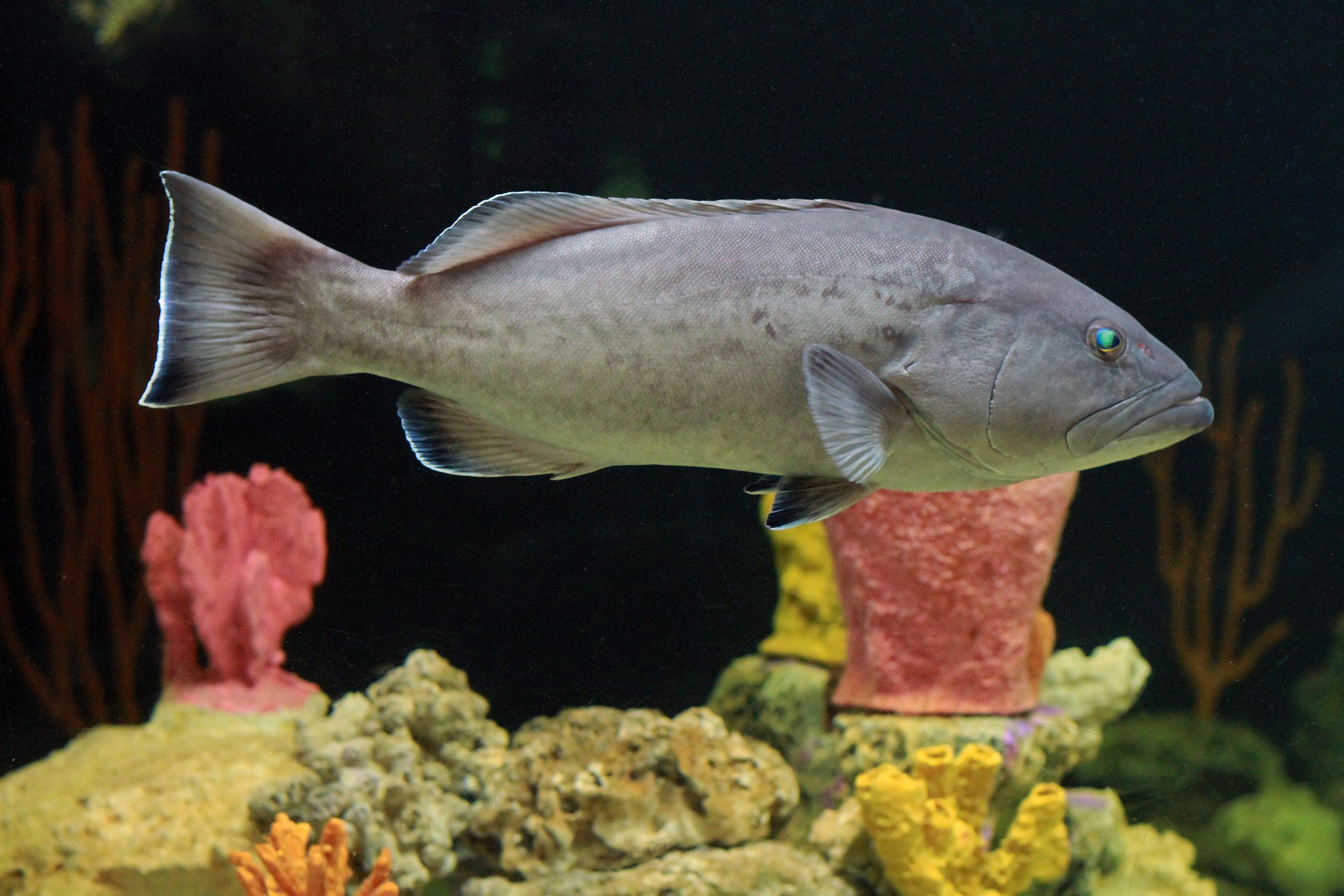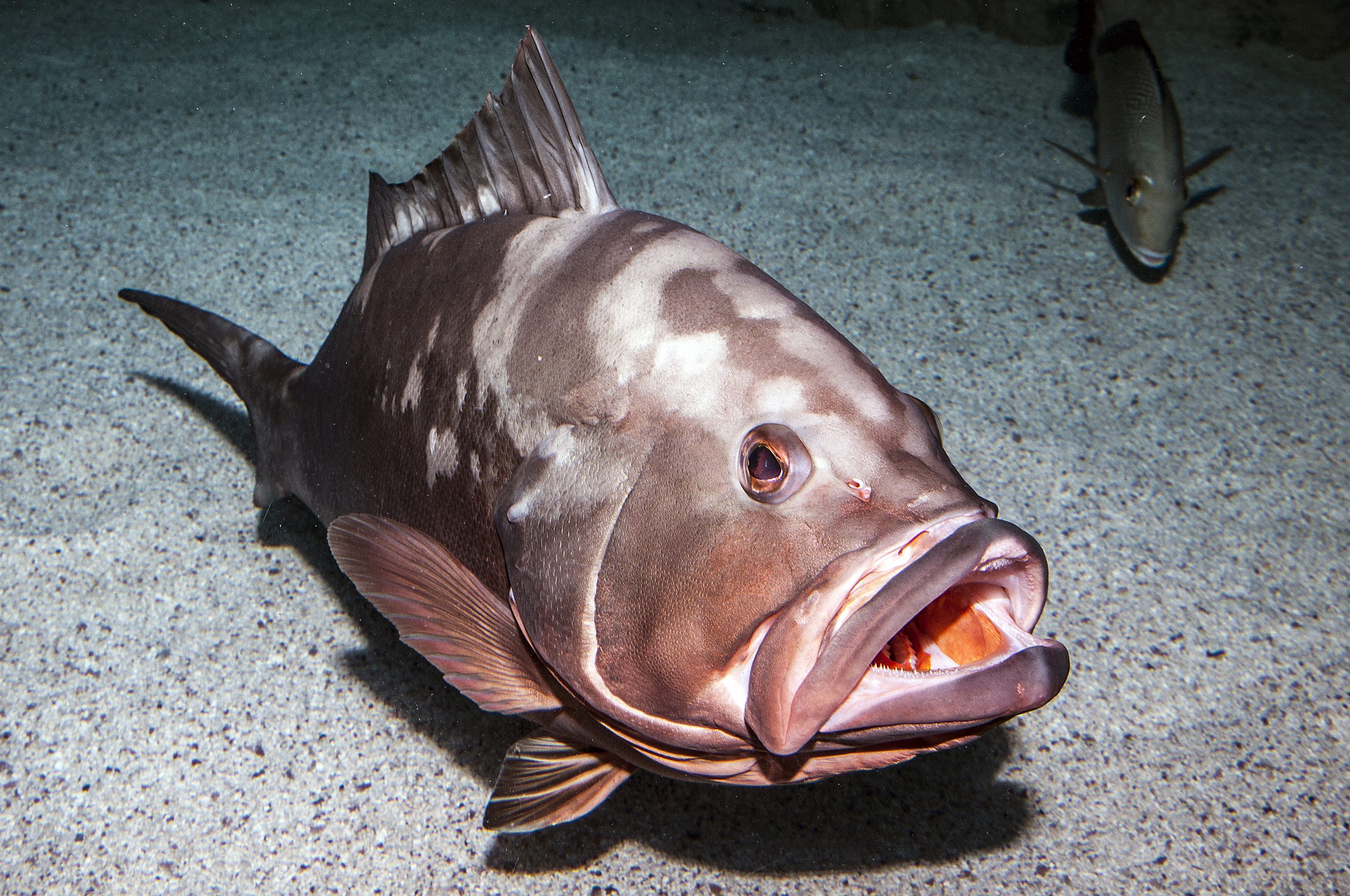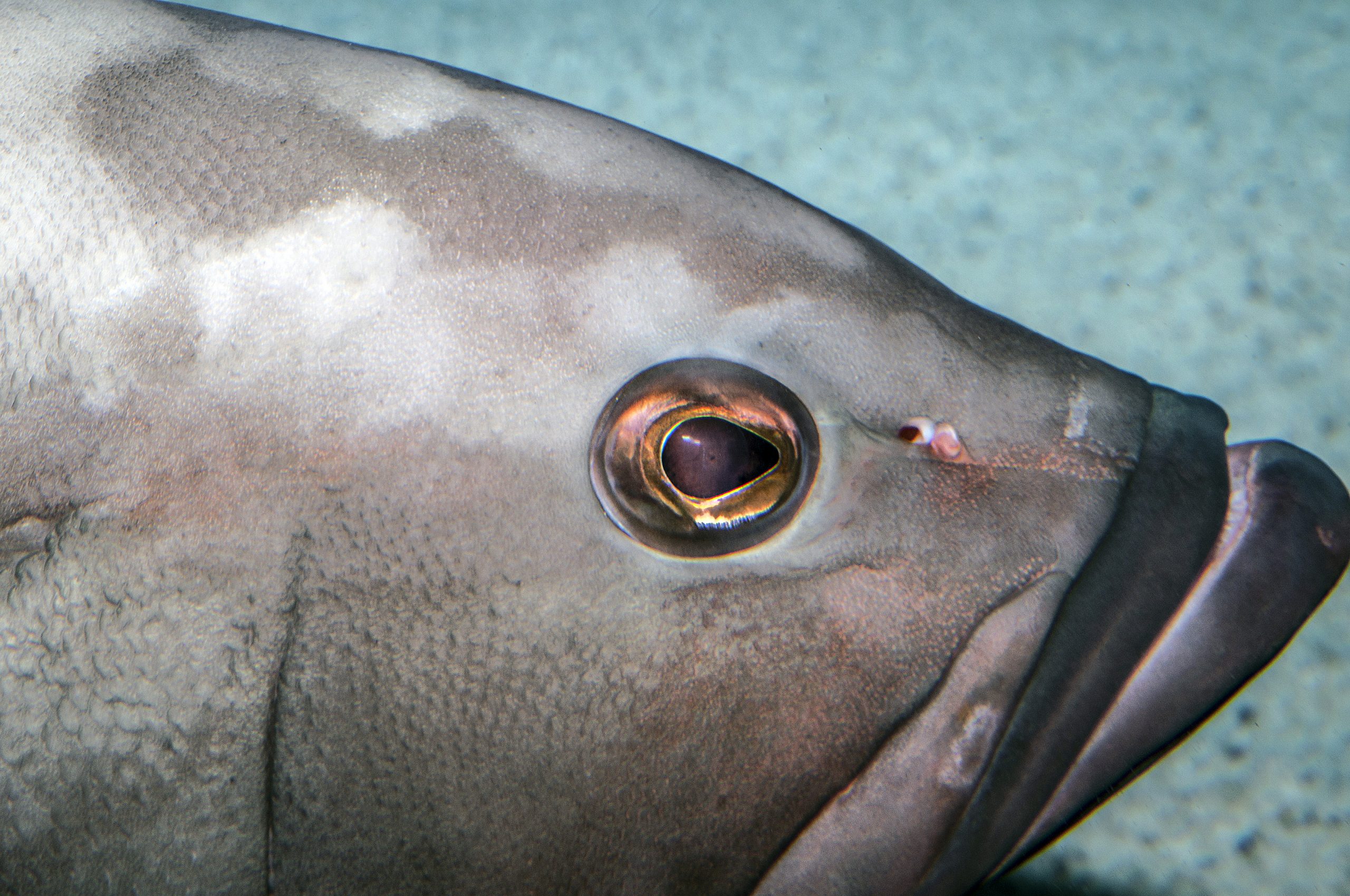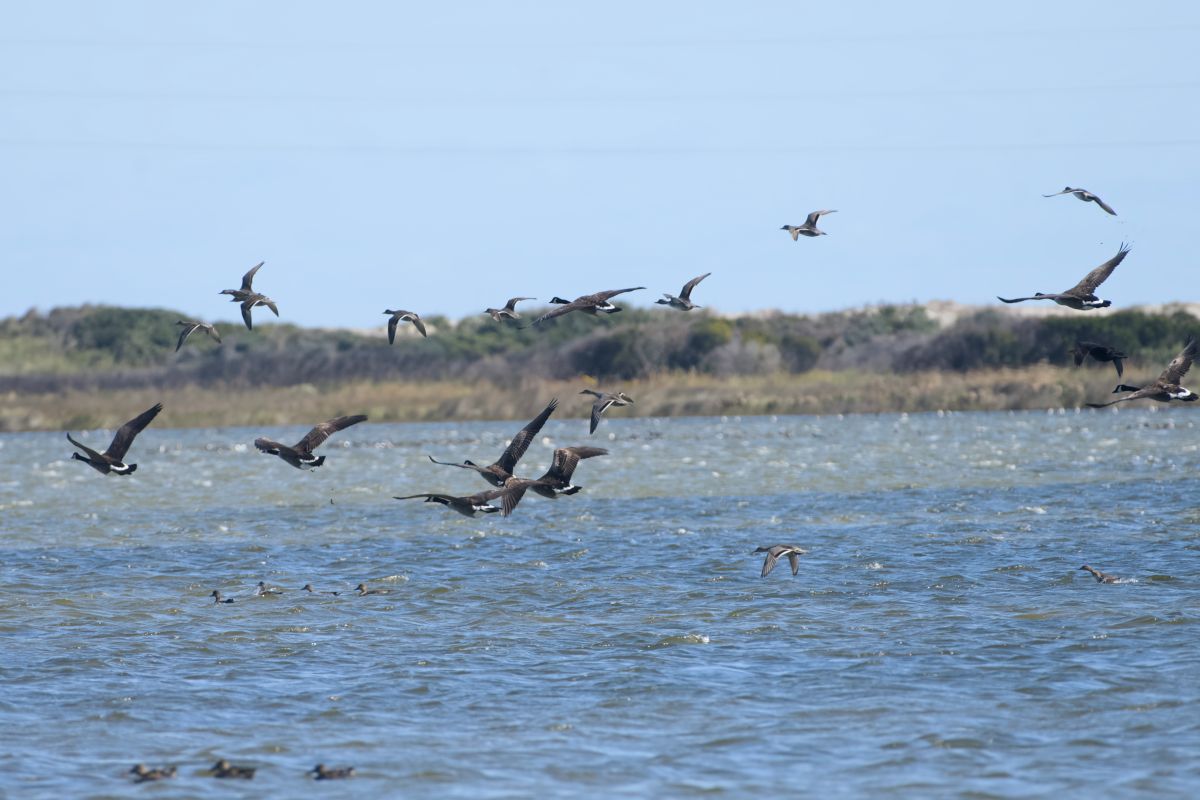
Grouper are large, fat-bodied fish with huge mouths and will eat just about anything they can fit in those choppers.
While there are several species of grouper off the East Coast, two stand out in North Carolina: gag and red grouper, the most important for North Carolina commercial and recreational fishermen.
Supporter Spotlight
“Adult gag grouper live in nearshore waters from coastal North Carolina south to Brazil and as well as in the Gulf of Mexico. Red grouper can be found as far north as Massachusetts to southeastern Brazil, (including) the eastern Gulf of Mexico,” said Barry Nash, seafood technology and marketing specialist with North Carolina Sea Grant.
Nash said red grouper have an average life span of 30 years and can be as long as 49 inches, while gag grouper can reach 58 inches in length. Red grouper weigh an average of 51 pounds while gag grouper can get as big as 81 pounds, he said.
Gag grouper have a long, compressed body and 11 to 14 rays in its anal fin. Their coloration varies widely and changes with the size and age of the fish. Large gag are dark brownish-gray on top, and paler to white on the bottom. Gag also have traces of dark, wavy markings on their sides. Smaller gag are a lot lighter in coloring, and have numerous dark brown, or charcoal, kiss-like marks along their sides.
The species has deeply notched gill covers, which is how you can tell them apart from black grouper.
“Adult gag grouper, live over on top of low- and high-profile hard bottom such as reefs or shipwrecks in waters between 60-250 feet deep,” said McLean Seward, fisheries biologist with the North Carolina Division of Marine Fisheries.
Supporter Spotlight
“Young gag grouper will live in oyster reefs, estuaries and sea grass beds from Massachusetts to Cape Canaveral, Florida. They frequently hang around rocky ledges and swim in small schools,” he said.
Gag grouper are sometimes misidentified as black grouper and scamp.
“Red grouper are easy to tell apart from gag grouper due to their large mouth, with a lower jaw sticking out slightly forward from the upper jaw. The coloration of red grouper helps to distinguish this species from gag with its head and body being dark reddish brown, shading pink or reddish or even pale pink along the lower part of its body,” Nash said.
“In North Carolina, gag will typically spawn in February and have clear larvae, which then make their way into estuaries. As water temperatures start to go down in the fall, juvenile gag will migrate from estuaries to offshore hard bottom habitat and larger members of their species,” said Seward.
“Red grouper typically will spawn from March through July,” Nash said.
Seward noted that all grouper are considered protogynous intersex, “that is they start their lives as females, and a part of the population will morph, or make the change, to males as they get older.
Females start to reach sexual maturity when they are about 24 inches in total length and about 3 years old. At this size and age, 50% of females are sexually mature, he said.
By the time they are about 32 inches in length and 6 years old, all females are sexually mature. By the time they are between 10 and 11 years old, and about 39 inches in total length, females can turn into males. Most gag over 45 inches total lengths are male.
The oldest know gag grouper was 26 years old. They can grow to about 58 inches total length and will weigh up to 81 pounds. They are voracious predators, and will feed on whatever they can capture including scad, snapper, grunt, sardines, crabs, porgies, shrimp and squid, said Seward.

In addition to their color, red grouper can be distinguished from gag by the sloped, straight line of their spiny dorsal fin. The dorsal fin has a long second spine. Most have a notched dorsal spine membrane and a third spine longer than the second.
“Red grouper has a deep brownish-red coloration overall, with scattered white spots on their sides. They also have tiny black specks on their cheeks,” said Seward.
Red grouper is found from Brazil north to North Carolina waters, including the Gulf of Mexico and the Caribbean. There are more red grouper from Florida’s east and west coasts, and throughout the Gulf of Mexico.
Red grouper live in and around ledges, caverns and crevices of rocky limestone reefs and lower-profile, live-bottom areas in waters 10 to 40 feet deep, and can be found down to depths of at least 300 feet.
“The red grouper is also a protogynous intersex and females are sexually mature by the time they reach 4 years old,” Seward said.
Spawning takes place from March to July. Females typically will let go an average of 1.5 million pelagic eggs that stay at the surface for between 30-40 days before finally settling down to the bottom. The species is soniferous, meaning that they make sounds that are probably tied to spawning activity.
“Red grouper may live to be as old as 25 years of age, with older specimens reaching a size of 32.5 inches and up to 25 pounds. Red grouper usually ambush their prey and swallow it hole. They will feed on lobster, shrimp, octopus, crabs and fish that are found close to their preferred reef habitat,” Seward said.
Red grouper are most closely related to Nassau grouper, which have several vertical bars and blotches, are more commonly found on coral reefs in the West Indies and are relatively rare in North Carolina waters. Nassau grouper are listed as threatened on the Endangered Species List, and it is illegal to target this species.
Bottom fishing is the best way to catch gag grouper, using live bait, including squid and cigar minnows. Use a depth finder to find deep-water rock ledges, artificial reefs and shipwrecks, a gag grouper’s favorite hiding place.
There is a 24-inch total length minimum requirement for possessing gag grouper and a trip limit of 1,000 pounds gutted weight, or 1,180-pound whole weight, until 75% of the annual catch limit is met or is projected to be met. After the quota has been met there is a trip limit is 500 pounds gutted weight, or 590 pounds whole weight.
An annual shallow-water grouper spawning season closure runs Jan. 1-April 30 in federal waters off the coasts of North Carolina and South Carolina, with the exception of red grouper, for which the season remains closed until June 1.
Shallow-water grouper include scamp, red grouper, black grouper, red hind, coney, yellowfin grouper, grasby and yellowmouth grouper.
All fish need to be landed with head and fins intact. Recreational and commercial fishermen are required to use dehooking tools when fishing for the snapper grouper species. The use of non-stainless-steel circle hooks, either offset or non-offset, is required for all species in the snapper grouper complex when using hook-and-line gear with natural baits in waters north of 28 degrees north latitude.
After the commercial annual catch limit is met, all purchase and sale are illegal and harvest and/or possession is limited to the recreational bag limit while recreational harvest is open.
“This prohibition does not apply to fish harvested, landed and sold before the annual catch limit is reached and held in cold storage by a dealer,” said North Carolina Division of Marine Fisheries Executive Assistant to Councils Steve Poland, who is also a representative with the South Atlantic Fishery Management Council.
Charter and head boat and commercial snapper grouper vessels must have National Marine Fisheries Service-approved sea turtle release gear and adhere to smalltooth sawfish release protocol, Poland added.
The red grouper is a different story all together. While populations of gag grouper have remained healthy, a 10-year effort to rebuild the red grouper stock has failed, leading to new, stricter rules and regulations taking effect this year.
In 2010, a Southeast Data, Assessment and Review, or SEDAR, benchmark assessment, SEDAR 19, was completed for South Atlantic red grouper.
Based on the results of SEDAR 19, the National Marine Fisheries Service determined that red grouper was overfished and undergoing overfishing. Amendment 24 to the Fisheries Management Plan established a 10-year rebuilding plan that began in 2011, with an end date of 2020.
A stock assessment update, SEDAR 53, for red grouper was completed in February 2017 using data through 2015. SEDAR 53 indicated the stock was still overfished and undergoing overfishing, and that stock rebuilding would not be possible by 2020.

Therefore, on Sept. 27, 2017, NMFS sent a letter to the council stating that the South Atlantic red grouper stock was not making adequate progress toward rebuilding.
The Magnuson-Stevens Act requires the implementation of management measures to end overfishing immediately and revise or implement a rebuilding plan within two years of notification by NMFS to the council of this stock status. So, NMFS took steps in 2018 to immediately end overfishing of red grouper by reducing the total commercial and recreational annual catch limits, based on the acceptable biological catch recommendation from the council’s Scientific and Statistical Committee.
Continued harvest at the levels specified in Abbreviated Framework Amendment 1 is expected to allow for rebuilding the red grouper stock within 10 years, but because the red grouper stock is not projected to fully rebuild by 2020 (SEDAR 53), the council must also
revise the current rebuilding plan so the stock rebuilds in the time frame mandated by the Magnuson-Stevens Act. Regulatory Amendment 30 addresses the revision to the rebuilding Plan.
“For red grouper, this final rule extends the closure season formerly from January to April, to January through May of each year for the next ten years for the commercial and recreational portions off North and South Carolina, and establishes a commercial trip limit,” said Poland.
There is currently no commercial trip limit for red grouper in the South Atlantic. This final rule establishes a commercial trip limit for red grouper harvested in the South Atlantic EEZ of 200 pounds, gutted weight. The trip limit is expected to help rebuild the red grouper stock by discouraging directed commercial fishing for the species, although it is not likely to substantially reduce the current level of commercial harvest of red grouper, according to the National Register.
“The council selected a commercial trip limit that in combination with extending the spawning season cloture for red grouper off North Carolina and South Carolina would help keep down harvest numbers to help rebuild the stock,” Poland said.







